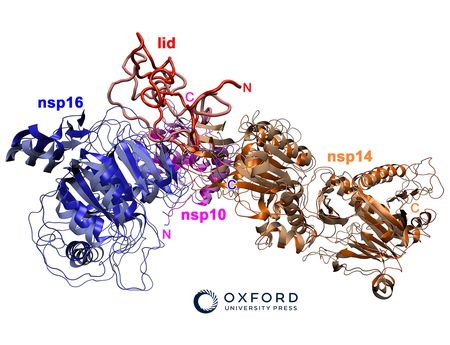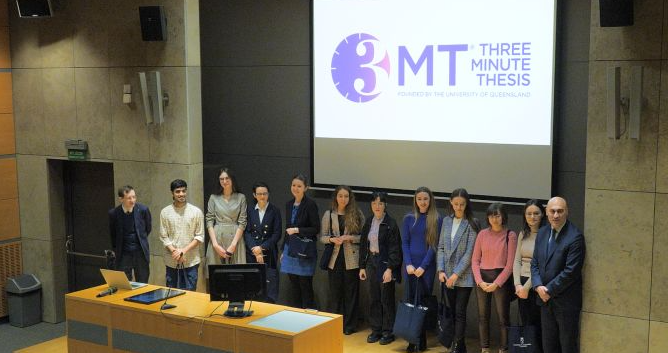
A team of scientists from the Malopolska Biotechnology Center JU, coordinated by Prof. Krzysztof Pyrc, has completed the project aiming to monitor the genetic variability of the SARS-CoV-2 virus.
Samples representative of the whole country have been collected and analyzed in cooperation with the Chief Sanitary Inspectorate (GIS) and diagnostics laboratories of Diagnostyka. Sequencing services have been supported by laboratories of companies: Diagtron Laboratoria Łukasz Rąbalski oraz genXone SA. The information obtained was used to better understand the pandemic waves in the country but also allowed for the inclusion of Poland in international analyses. All data were communicated directly to stakeholders: the Medical Research Agency, and the Ministry of Health, as well as made available to all interested parties through the GisAid database and visualizations on http://sarswpolsce.pl/ .
At the Krakow center, the monitoring of viral evolution was already undertaken in early 2020, when we were one of the first centers to start analyzing the genetic variation of the virus, as well as to analyze the links between genotype and phenotype of the virus.
Within the project, we collected a total of 9558 SARS-CoV-2 samples, which, after initial evaluation, were used to obtain 8337 virus sequences. Due to the efficient organization and cost optimization, the goals were met, and the number of samples analyzed exceeded the target. During the monitoring period, 132 distinct variants of the SARS-CoV-2 virus were observed, of which 97.5% were VOC variants. Delta variant accounted for the largest percentage, 38.3% of all samples. This was directly related to the period of the project, which mainly included the autumn wave of infections. The other two most frequently detected variants, Alpha, and Omicron, accounted for, respectively: 37.7% and 21.2%.
The main objective of our work was to monitor the variability of the virus over time, but on top of this, we also prepared a series of research papers in top scientific periodicals.
- Geographical and temporal distribution of SARS-CoV-2 clades in the WHO European Region, January to June 2020. Alm E, Broberg EK, Connor T, Hodcroft EB, Komissarov AB, Maurer-Stroh S, Melidou A, Neher RA, O'Toole Á, Pereyaslov D; WHO European Region sequencing laboratories and GISAID EpiCoV group; WHO European Region sequencing laboratories and GISAID EpiCoV group*. Euro Surveill. 2020;25(32):2001410.
IF=21.286 - The SARS-CoV-2 ORF10 is not essential in vitro or in vivo in humans. Pancer K, Milewska A, Owczarek K, Dabrowska A, Kowalski M, Łabaj PP, Branicki W, Sanak M, Pyrc K. PLoS Pathog. 2020;16(12):e1008959.
IF=7.464 - Expansion of a SARS-CoV-2 Delta variant with an 872 nt deletion encompassing ORF7a, ORF7b and ORF8, Poland, July to August 2021. Mazur-Panasiuk N, Rabalski L, Gromowski T, Nowicki G, Kowalski M, Wydmanski W, Szulc P, Kosinski M, Gackowska K, Drweska-Matelska N, Grabowski J, Piotrowska-Mietelska A, Szewczyk B, Bienkowska-Szewczyk K, Swadzba J, Labaj P, Grzybek M, Pyrc K. Euro Surveill. 2021;26(39):2100902.
IF=21.286 - Zoonotic spill-over of SARS-CoV-2: mink-adapted virus in humans. Rabalski L, Kosinski M, Mazur-Panasiuk N, Szewczyk B, Bienkowska-Szewczyk K, Kant R, Sironen T, Pyrc K, Grzybek M. Clin Microbiol Infect. 2022;28(3):451.e1-451.e4.
IF=13.310
The project was carried out from the 1st of February 2021 until the 31st of April 2022. The research was financed by the Medical Research Agency. Project number: 2020 / ABM / COVID19 / UJ.

Research Team:
prof. dr hab. Krzysztof Pyrć – management and planning
prof. dr hab. Wojciech Branicki – sequencing technology and quality control
dr hab. inż. Paweł Łabaj – bioinformatics
dr Natalia Mazur - Panasiuk – data and sample workflow
Supported by:
dr Tomasz Gromowski
mgr Michał Kowalski
Witold Wydmański
Piotr Szulc
mgr Sylwia Januszczak
mgr Paulina Krzanowska




